TO LEARN IS TO GROW
Learning Center
We do our research and publish our results. Should probably call this the Growing Center.


How Do I Secure My WordPress Website?
Make your business website more secure and less susceptible to being hacked or exploited with these tips on how to secure your WordPress website.
Many companies today rely on WordPress to claim their own space on the Internet. For many years now, WordPress has been a platform for both businesses and individuals.
WordPress, in fact, is one of the top Content Management Systems (CMS) in the world. There is no question that it is an excellent choice for beginners and experts in the industry alike. It has great features and has powerful Search Engine Optimization (SEO).
As an incredibly popular CMS, WordPress is exposed to high risks. The success of any application catches the attention of many hackers all over the world. Hackers will try to infiltrate the system and exploit whatever data they may find onsite.
Why is security such an important aspect of your website?
According to Hackmageddon’s “June 2019 Cyber Attacks Statistics“, malware attacks are the most common form of cyber-attack on websites today. Of particular note is ransomware, which accounted for 37.4% of all website attacks in May 2019.
Other forms of attacks that can be directed against your website include account hijacking attempts, cyber espionage, script injections, brute-force attacks, DDoS attacks, and more.
Remember: it’s not just about the end-user, it’s also about your business. If the security of your website isn’t up-to-par and you have a high-profile story going around the web, you could be at risk of losing potential customers. A hack can cost your business a lot of money.
And with that, here are eleven tips on how to (better) secure your WordPress website:
1. Keep Your Site Updated
One of the most important things you can do to secure your WordPress website is to keep it updated.
When a new version of WordPress is released, it fixes the security holes found in the previous version and also improves overall performance and efficiency. Keeping your WordPress site updated secures your site from hackers who constantly search for vulnerabilities to exploit.
So for security purposes, it’s important to update your CMS along with any third-party components (such as your plugins, extensions, themes, and other applications). Remember, your server, Apache, and PHP must be up-to-date as well.
One more thing to take note of: as you may have noticed, updates are often not downloaded automatically. This can be a problem, especially if you have more than one website to maintain. In order to ensure that your website is updated, you can enable automatic updates on your server. Or you can use a plugin like WordPress Automatic Updates.
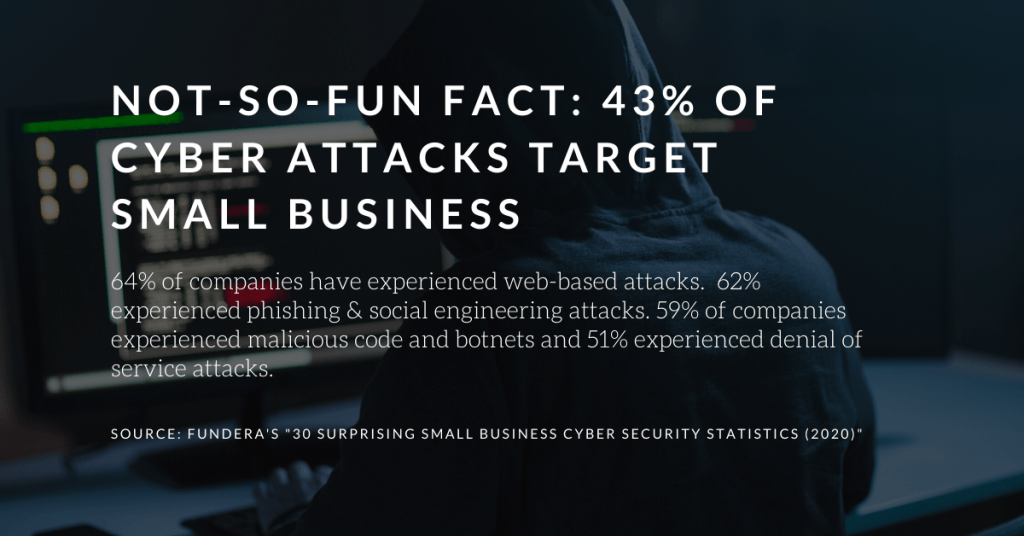
2. Reduce the Surface of Attack
You can never be sure that your website is 100% secure, but you can make it nearly impossible for hackers to get in by making it so complicated to do so.
The best way to do this is to reduce the “surface of attack”, which in this case means reducing the places a hacker can get into.
For example, you might be running WordPress on your local computer (not recommended) and had no security plugins installed. This means that if you were to get hacked, a hacker could get in from anywhere. But if you were to install the best security plugins, the hacker would have fewer areas to attack from. These highly-recommended plugins are WordFence (free), BackWPup (free), and Sucuri (paid).
Access to your site may be achieved through a number of ways: your control panel, your FTP/SFTP, hosting, database, and content management system are all entry points that might be exploited.
So you should harden your website access points. Only allow public access to public areas of your application, and deny everything else by default. This can be accomplished with server configuration rules, setting file and folder permissions, and through the use of a web application firewall.
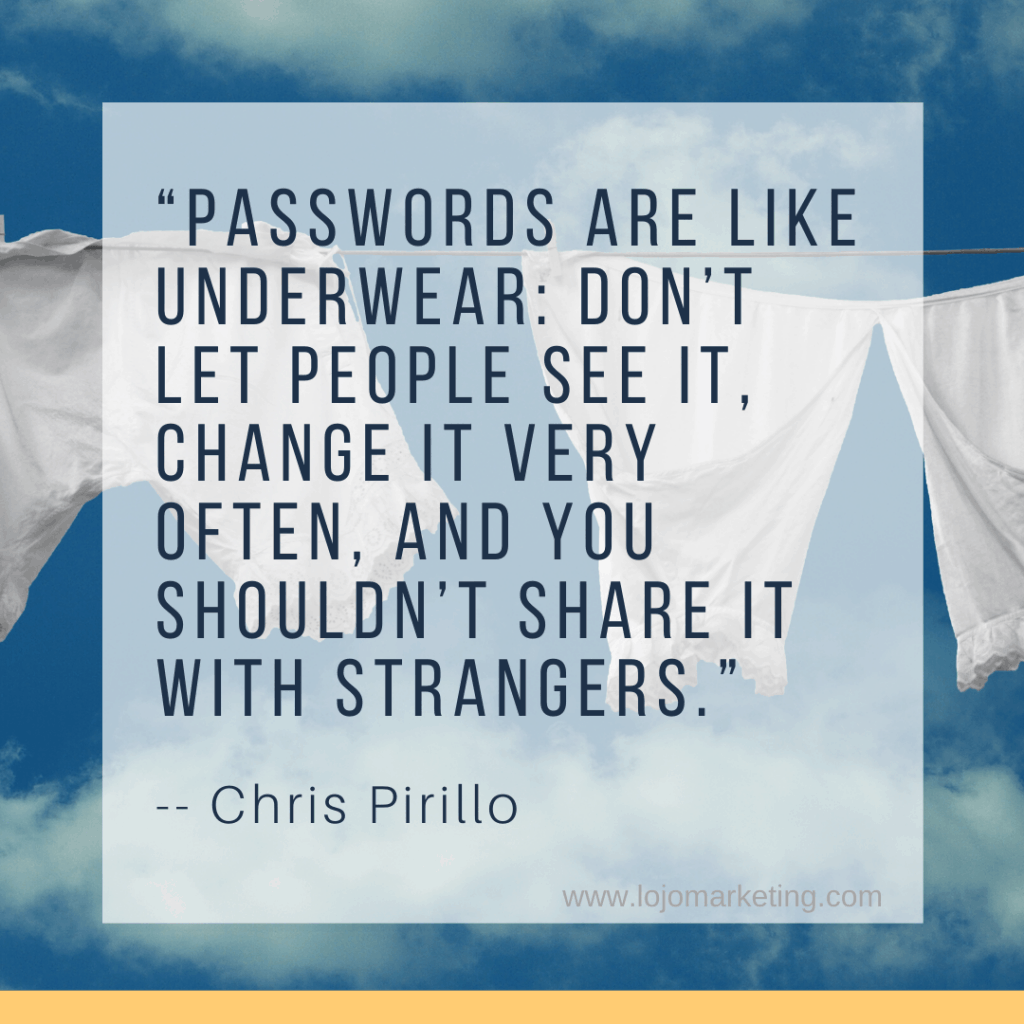
Why Should You Secure Your WordPress Website?
We know website security is important. But do we really have to take it so seriously?
Yes, you should always take your WordPress security seriously. For business and website owners, any malicious attack on their WordPress site by exploit brings a question to their credibility and competence. Not to mention, recovering your website can cost a lot of money – money that could have been spent elsewhere within the business.
And it is for this reason that you need to think about website hardening, which is beefing up your site’s security by adding layers of protection to reduce the risk of website attack.
Cybersecurity experts also refer to website hardening as “defense in depth.” Multiple defensive mechanisms are set up to protect your site, so even if one measure fails, another layer is still active to thwart the attack.
3. Use Input Sanitization Techniques
Webmasters and developers often overlook input sanitization as a way to make their websites less vulnerable to hackers and other malicious users.
Input sanitization is the process of filtering user-submitted data to mitigate the potential damage of a malicious attack. Input sanitization is a part of the broader category of “validation.” This means checking to make sure that submitted data conforms to the rules of the application or website. In the case of a website, the data could be malicious code or SQL statements intended to exploit a database or server.
Here’s what you do: limit the kind of data a user can enter. By cleansing and scrubbing user input, you prevent them from exploiting possible security holes. You can eliminate unwanted characters from the input, limit the maximum length or size, or limit the use to just numbers or just letters.
As a rule, never trust the user and always accurately filter what is sent to your application. Accidental damage can be just as harmful as intentional damage.
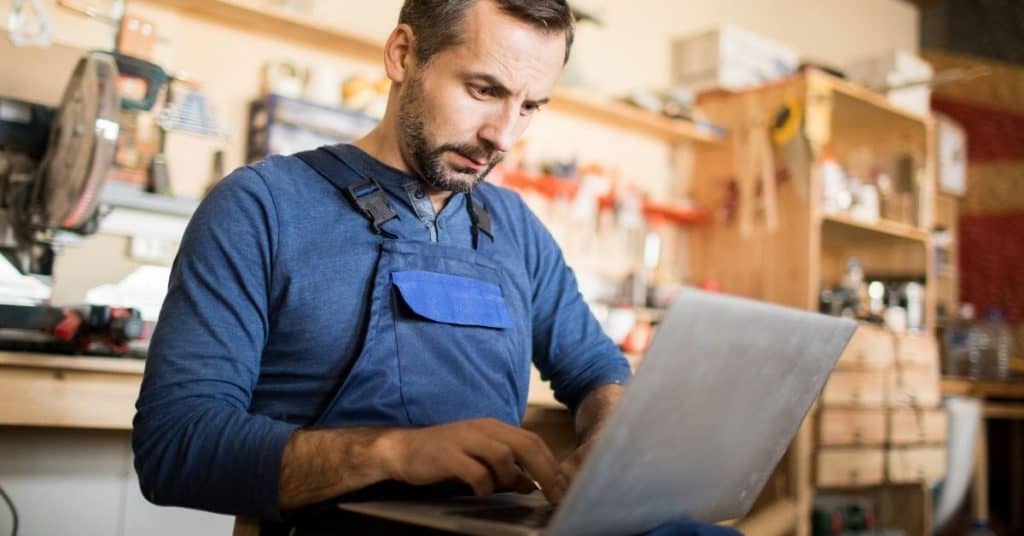
If you run a WordPress site, there are a few quick things you can do to make sure your site is secure and protected from hackers. Input sanitization is one of the most important steps that you can take to protect your sites, and it’s relatively easy to implement.
4. Limit Log-ins
Have you ever wondered why there is a limit to the number of logins users can have on a WordPress site? Normally, there is no limit to the number of logins you can have on a WordPress site. But some hackers may try to employ a brute force attack to hack your WordPress website. The best way to prevent a hack through this method is to enforce a login limit.
A brute-force attack is a (very) simple form of hacking that involves trying every possible combination of characters until it finds the right one.
For example, a brute-force attack on an 8-character password would involve trying every combination of 8 characters. That is 7,776 different passwords to try, which is not a lot of passwords. It would take only a few hours to get the right password. If you had a password with 20 characters, that would be 19,683,020,800 different combinations to try, which would take years to try every combination.
The point is, the longer the password the harder it is to brute-force attack your site, so the smaller the number of logins you have the safer your site is.
Install a WP limit login plugin to prevent attempts like these. This plugin works by blocking IP addresses that exceed the threshold you have set. For instance, you may set 3 failed login attempts before an IP address gets blocked. It is an easy yet effective way to prevent any unauthorized logins.
5. Remove Unnecessary Extensions or Components
We know that WordPress is now the most popular CMS on the web and it powers almost 30% of the internet today. This popularity is also the reason why it has become the number one target of hackers.
WordPress has a rich collection of plugins and themes. Some plugins are well written and others are not. As a website owner, you should take the time to update your plugins and themes and remove any unnecessary ones. You can check for outdated or vulnerable plugins by using WPScan.
So go right ahead and take away all plugins, themes, or apps that you are not using on your site. Delete them– disabling them is not the same as removing them.
Each additional piece of code in your application is a potential gateway for an attacker, so by limiting the number of dependencies, you also minimize the risk of an attack.

Keep in mind that, just because a component or plugin came with your WordPress theme, it doesn’t mean it is a “must-have.” The more components and plugins your website has, the more likely it is to be a target of a cyber attack, so be careful and always remove any unnecessary components or plugins.
6. Have Granular Permission Control
A great way to make sure your website is super secure is to have granular permission control.
This means that you should be able to control who can do what on your WordPress. You should be able to restrict access to certain pages and content.
This is especially true if you are running some kind of a membership site. You don’t want your members to see other members’ content. You should also be able to control access to your admin panel. You don’t want just anyone to have access to it.
If you have a membership site, then you need to take this a step further and make sure your users are properly restricted to their membership level. This means you need to have a different password, email, roles, and capabilities for every level.
Remember: you don’t have to give every team member or user administrative access. Restrict permissions only to certain designated people, and make sure you don’t give away privileges to other users that aren’t necessary.
So in the case of your site, you probably should only have a couple of admins, maybe a few editors. Authors or other contributors certainly should not have administrative privileges.
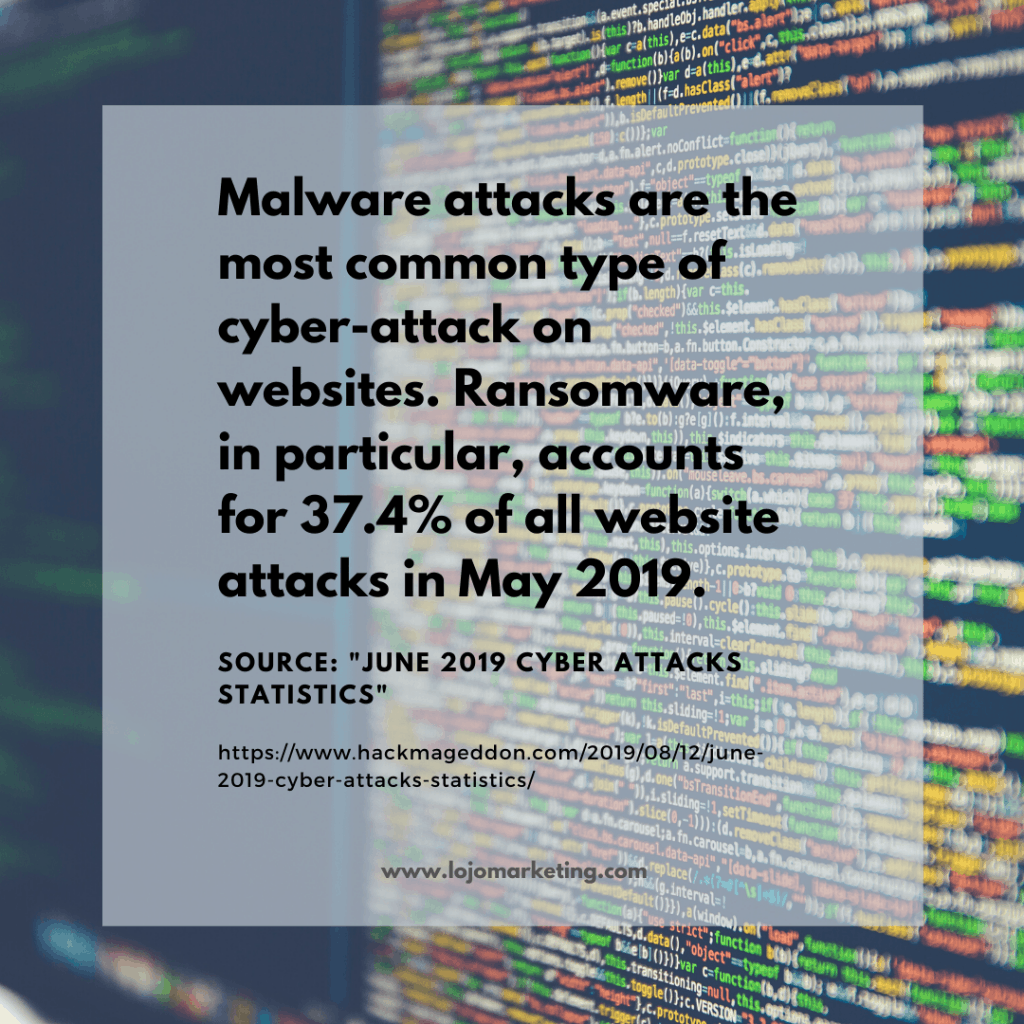
Why are malware attacks the most common attacks on websites?
There are a couple of reasons why malware attacks are currently the most common attacks performed on websites.
The first reason is that many website owners do not have the proper protection in place for their sites.
Secondly, hackers are always looking for new ways to exploit websites and make a profit.
Recently, we have seen a rise in the number of websites being hacked and taken over because of the amount of traffic they receive.
7. Use Multi-Factor Authentication
Multifactor authentication is a method of confirming a user’s claimed identity by utilizing multiple authentication factors.
One-factor authentication is based on a single proof of identity, such as a password or a biometric. The problem with one-factor authentication is that it is relatively easy to steal or guess passwords, or other forms of authentication.
Two-factor authentication (2FA) uses two or more different authentication factors, such as a password and a biometric. It simply means that for every login, you will be required to pass through two steps: the first step is entering the password, the second step is another factor.
2FA tools ask for a token of sorts after the initial authentication method. This second step can be a generated code sent to an authorized user’s mobile phone or some other similar measure. It can be an answer to a pre-selected question. This feature may be enabled by installing a Google authenticator plugin.
Two-factor authentication is commonly used in banking and government and it is increasingly being adopted by businesses. Google, for example, has a two-step verification process for users of their services. The first step is their password and the second is the verification code that is sent to the user’s mobile device.
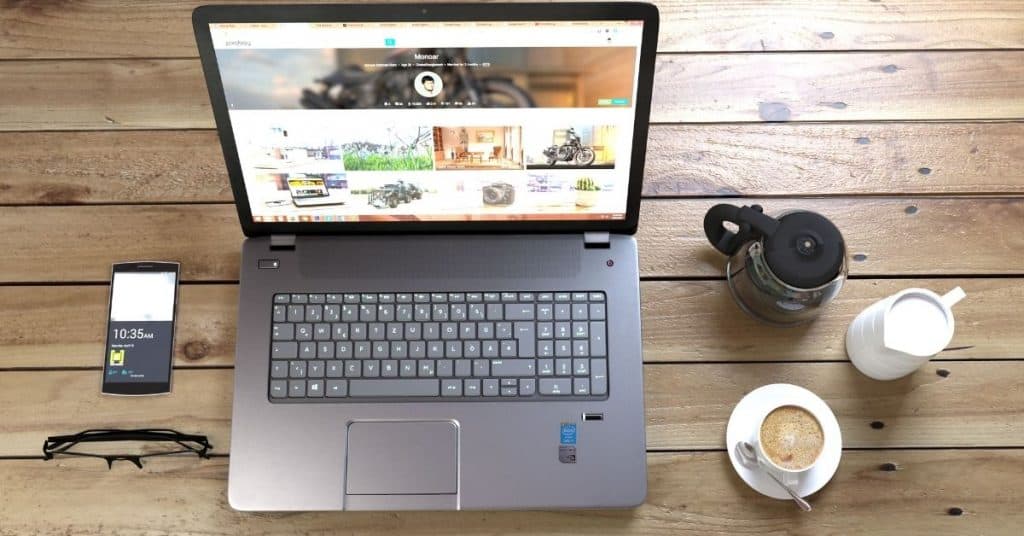
A simple measure such as two-factor authentication can thwart many attacks simply by making sure that someone accessing your site is not just a random individual.
8. Use Secure Passwords
When it comes to your WordPress site, hackers have only one goal: to get inside. And they’ll do it by whatever method they can.
Your site is most vulnerable when you have a default username and password. So, you need to make sure that you have the strongest password possible. If you’re using a default username and password, then you are vulnerable to being hacked, or at least targeted by hackers.
That said, using long and complicated passwords is your first step in defense against hackers.
Do not use any information available to the public as your WordPress password. For instance, if your website is “http://johndoe.com,” do not use a password like “johndoe1”.
Don’t use birthdays or home addresses either.
Avoid using common passwords, such as password123, 1234567890.
Use a combination of upper and lowercase letters, numbers, and symbols to make your password extra secure.
There are password management tools (such as Password Generator) to help you employ strong unique passwords. Go ahead and enforce a minimum level of strength for your passwords– use a combination of upper-case and lower-case letters, numbers, and at least one special character.
We recommend using the strongest, most difficult password possible. Use a combination of letters and numbers, in upper and lower case. Make sure you use at least 8 characters and include at least one symbol. You should also change your password every 6 months. This way, if hackers do somehow get into your site, they will be unable to exploit any vulnerabilities for long.
9. Allow Secure Access Only
Using SSL (Secure Sockets Layer) certificates allows you to encrypt data that’s sent back and forth between your web server and your website visitor’s web browser. This is important because it protects your visitor’s private data, such as credit card information and passwords, from being viewed by a third party.
This is where your HTTPS comes into play. This layer of security ensures that all traffic is encrypted. This can be easily confirmed by checking for an unbroken padlock right there on the URL window just before the web address.
Secure access prevents direct access from public hotspots, and only allows access to restricted areas when using a secure channel such as a VPN or proxy. Make sure all your site administrators are accessing your business website from safe devices.
If a hacker were to get a hold of your visitor’s data, they would only be able to view it in an encrypted format that they wouldn’t be able to interpret.
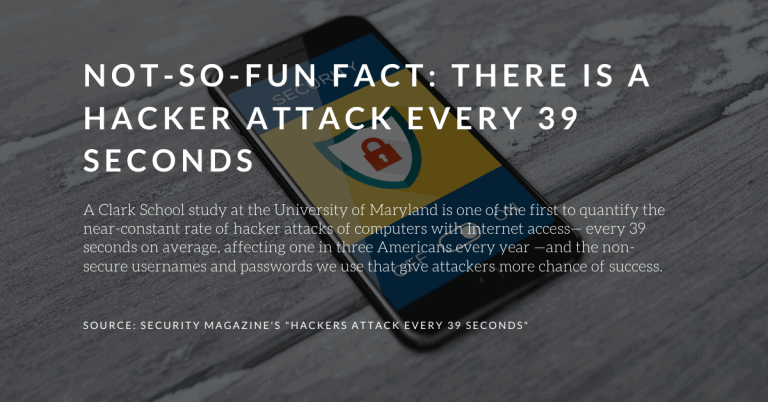
10. Reduce Verbosity and Exposure of Information
There is a lot of information that is stored on your website in preparation for displaying to all of your users. The problem is that these pieces of information are available for hackers to use.
If you have a lot of information on your site, or if you store it in a way that is visible to the public, hackers may be able to use this information to their advantage. You want to make sure that you are using secure coding to prevent information from being stolen. You don’t want your business to be the next victim of a hacker attack so take these security tips into consideration.
No need to get specific when someone enters the wrong username or password. So, instead of “Your password is incorrect”, the prompt should say something like “Login credentials invalid.”
Reducing verbosity in this manner can diminish the chance of a successful brute force attack just by introducing doubt about whether the username is correct or not.
In addition, sensitive data must not be written on application logs and neither should these logs be publicly accessible. This is the reason why you should be employing internal error codes– you can reduce the amount of information displayed while still allowing for easy debugging.
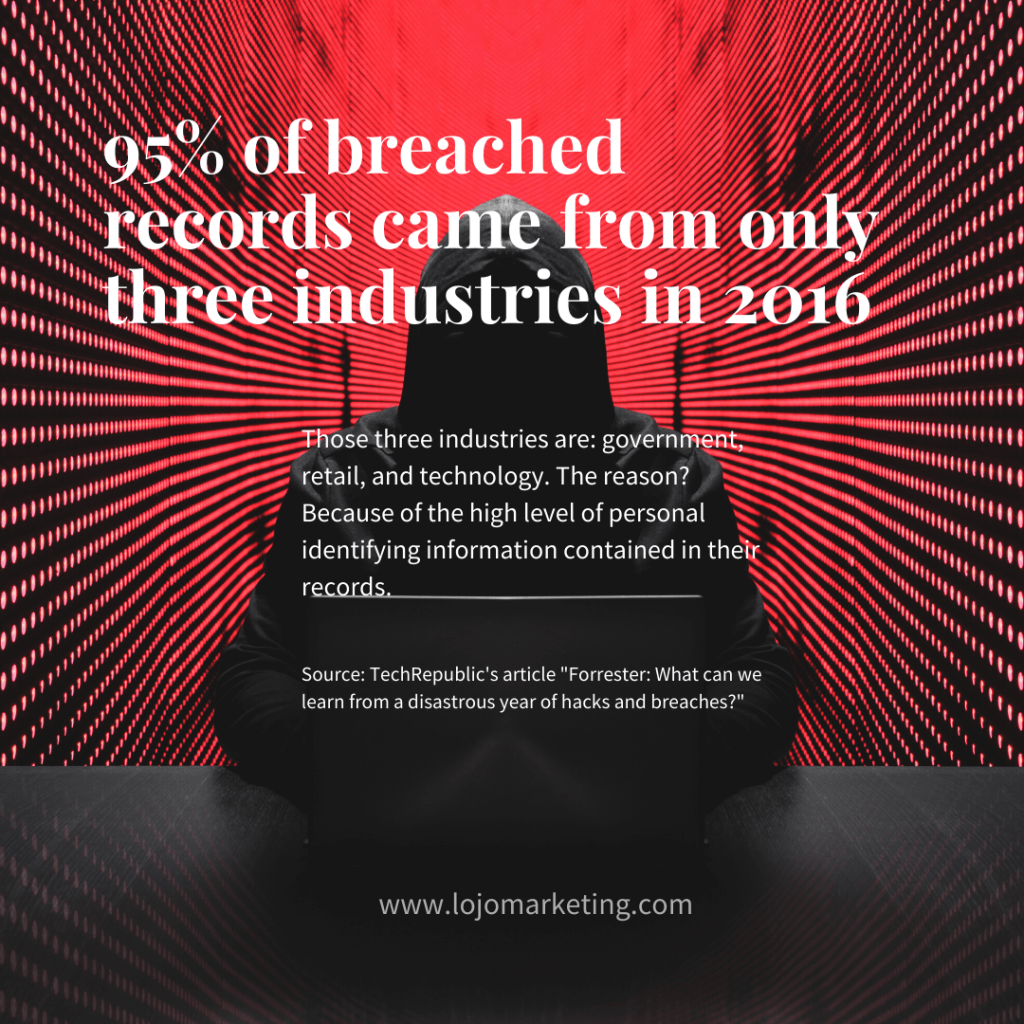
Are some types of businesses more prone to website attacks?
Security is a big issue for businesses. With everything that’s said about hackers, viruses, and malware, you’d think that a business would be better off out of the internet.
But in truth, the internet is just a bigger playing field and more internet users mean more people to reach. In fact, with the right tools, a business can become more secure than ever before and make sure that its website is doing everything it can to protect its visitors.
There’s a lot of debate about what type of business is more susceptible to attacks but the fact is, no one is safe.
While small businesses may be a target for different reasons, big businesses are always on the radar. As a matter of fact, big businesses are more likely to be targeted because they have more at stake– retail and tech, for example, as well as smaller government websites.
The good news is that there are a lot of things that any business can do to make sure that their website is secure and that they are doing everything they can to protect the visitors to their website.
11. Monitor Your Website and Keep Up With its Log Activity
If you don’t monitor your website, you will not know if your website has been hacked. And if you don’t know that, you can’t fix it. If you don’t fix it, you will lose money. If you lose your website to hackers, you might lose your business.
So it’s not enough to secure your website. Monitoring your website’s log activity is one of the most effective ways to prevent hackers from getting into your website. Log activity is basically a record of everything that happens on your website. You should keep a track of all the changes on your website’s log.
If you’re not sure how to do this, use WordPress’ built-in logging feature. WordPress has a built-in logging system that tracks all the changes on your website. You can see the log activity by going to the “Activity Log” page in your WordPress admin dashboard.
Make it a habit to track any changes that happen in your data. By installing plugins such as Sucuri or Wordfence, you will be notified of any changes if there are any. You can then review if this is a legitimate change or an unauthorized one. Be sure to install one of these two programs as an added layer of protection.
This way, you spot important information concerning application misconfiguration, malfunctions, attack attempts, and other important status information right away before it does any serious damage.
Remember, there’s no rest for the wicked. Make sure you scan through your logs to check for anomalies. Tampering with your files is one way by which hackers can harm your website.

We live in a digital world and it is hard to believe that it is so easy to get hacked. A website is a powerful tool that can help your business grow and give you a lot of profit. But if you keep it unprotected, you might be putting all your hard work at risk.
Bonus Tip: Make Backing up Files a Habit
One of the most effective ways you can keep your business website secure is to make sure you have a backup of all your files. This can be a lifesaver if you ever experience a data loss or a hacking attempt.
To mitigate this disaster-in-the-making, backing up your files is a must. You can never predict the intention of a hacker, and they might go on a cleanup spree and delete all of the relevant data you have accumulated over the years.
Backing up your website files is critical to ensure you don’t lose any of your important information. If you’re using a cPanel, you can create backups by using the command line. This is the most reliable way to back up your files because it is done to the server itself, which is not affected by the server’s performance.
If you’re using a different hosting provider, you can download a plugin that enables you to create backups. If you’re using a WordPress hosting account, you can use the native backup feature.
There is truth in the saying, “It’s better to be safe than sorry.” If there is someone dedicated to hacking your website, there is a reasonable chance that they will eventually get in. Having an off-site backup for your files is a must!
A Final Word on Securing Your WordPress Website
While there is a risk in using a platform like WordPress, we’d like to point out that it’s still one of the best content management systems around, and protecting your website from hacking attempts is not impossible. The steps we outlined above are actually pretty good security tips– probably even more than what a typical WordPress user might do.
Web security issues are more common than you think, but by taking a more proactive stance when it comes to hardening your business website, cyber-attacks can be avoided.
One of the best ways to harden your website is through a web application firewall. When used in conjunction with good security habits like proper password management and limiting privileges, you’ve already secured your site, giving you the much-needed peace of mind to focus on your business.
Website security is something you should take seriously. As far as hardening and securing your website goes, we here are LOJO are always happy to help!
Go right ahead and request a free, no-obligation WordPress Security Checkup from our web security team, so we can have a look at your site and share with you our recommendations to better secure and harden your website.

How Do I Secure My WordPress Website?
Make your business website more secure and less susceptible to being hacked or exploited with these tips on how to secure your WordPress website.
Many companies today rely on WordPress to claim their own space on the Internet. For many years now, WordPress has been a platform for both businesses and individuals.
WordPress, in fact, is one of the top Content Management Systems (CMS) in the world. There is no question that it is an excellent choice for beginners and experts in the industry alike. It has great features and has powerful Search Engine Optimization (SEO).
As an incredibly popular CMS, WordPress is exposed to high risks. The success of any application catches the attention of many hackers all over the world. Hackers will try to infiltrate the system and exploit whatever data they may find onsite.
Why is security such an important aspect of your website?
According to Hackmageddon’s “June 2019 Cyber Attacks Statistics“, malware attacks are the most common form of cyber-attack on websites today. Of particular note is ransomware, which accounted for 37.4% of all website attacks in May 2019.
Other forms of attacks that can be directed against your website include account hijacking attempts, cyber espionage, script injections, brute-force attacks, DDoS attacks, and more.
Remember: it’s not just about the end-user, it’s also about your business. If the security of your website isn’t up-to-par and you have a high-profile story going around the web, you could be at risk of losing potential customers. A hack can cost your business a lot of money.
And with that, here are eleven tips on how to (better) secure your WordPress website:
1. Keep Your Site Updated
One of the most important things you can do to secure your WordPress website is to keep it updated.
When a new version of WordPress is released, it fixes the security holes found in the previous version and also improves overall performance and efficiency. Keeping your WordPress site updated secures your site from hackers who constantly search for vulnerabilities to exploit.
So for security purposes, it’s important to update your CMS along with any third-party components (such as your plugins, extensions, themes, and other applications). Remember, your server, Apache, and PHP must be up-to-date as well.
One more thing to take note of: as you may have noticed, updates are often not downloaded automatically. This can be a problem, especially if you have more than one website to maintain. In order to ensure that your website is updated, you can enable automatic updates on your server. Or you can use a plugin like WordPress Automatic Updates.

2. Reduce the Surface of Attack
You can never be sure that your website is 100% secure, but you can make it nearly impossible for hackers to get in by making it so complicated to do so.
The best way to do this is to reduce the “surface of attack”, which in this case means reducing the places a hacker can get into.
For example, you might be running WordPress on your local computer (not recommended) and had no security plugins installed. This means that if you were to get hacked, a hacker could get in from anywhere. But if you were to install the best security plugins, the hacker would have fewer areas to attack from. These highly-recommended plugins are WordFence (free), BackWPup (free), and Sucuri (paid).
Access to your site may be achieved through a number of ways: your control panel, your FTP/SFTP, hosting, database, and content management system are all entry points that might be exploited.
So you should harden your website access points. Only allow public access to public areas of your application, and deny everything else by default. This can be accomplished with server configuration rules, setting file and folder permissions, and through the use of a web application firewall.

Why Should You Secure Your WordPress Website?
We know website security is important. But do we really have to take it so seriously?
Yes, you should always take your WordPress security seriously. For business and website owners, any malicious attack on their WordPress site by exploit brings a question to their credibility and competence. Not to mention, recovering your website can cost a lot of money – money that could have been spent elsewhere within the business.
And it is for this reason that you need to think about website hardening, which is beefing up your site’s security by adding layers of protection to reduce the risk of website attack.
Cybersecurity experts also refer to website hardening as “defense in depth.” Multiple defensive mechanisms are set up to protect your site, so even if one measure fails, another layer is still active to thwart the attack.
3. Use Input Sanitization Techniques
Webmasters and developers often overlook input sanitization as a way to make their websites less vulnerable to hackers and other malicious users.
Input sanitization is the process of filtering user-submitted data to mitigate the potential damage of a malicious attack. Input sanitization is a part of the broader category of “validation.” This means checking to make sure that submitted data conforms to the rules of the application or website. In the case of a website, the data could be malicious code or SQL statements intended to exploit a database or server.
Here’s what you do: limit the kind of data a user can enter. By cleansing and scrubbing user input, you prevent them from exploiting possible security holes. You can eliminate unwanted characters from the input, limit the maximum length or size, or limit the use to just numbers or just letters.
As a rule, never trust the user and always accurately filter what is sent to your application. Accidental damage can be just as harmful as intentional damage.

If you run a WordPress site, there are a few quick things you can do to make sure your site is secure and protected from hackers. Input sanitization is one of the most important steps that you can take to protect your sites, and it’s relatively easy to implement.
4. Limit Log-ins
Have you ever wondered why there is a limit to the number of logins users can have on a WordPress site? Normally, there is no limit to the number of logins you can have on a WordPress site. But some hackers may try to employ a brute force attack to hack your WordPress website. The best way to prevent a hack through this method is to enforce a login limit.
A brute-force attack is a (very) simple form of hacking that involves trying every possible combination of characters until it finds the right one.
For example, a brute-force attack on an 8-character password would involve trying every combination of 8 characters. That is 7,776 different passwords to try, which is not a lot of passwords. It would take only a few hours to get the right password. If you had a password with 20 characters, that would be 19,683,020,800 different combinations to try, which would take years to try every combination.
The point is, the longer the password the harder it is to brute-force attack your site, so the smaller the number of logins you have the safer your site is.
Install a WP limit login plugin to prevent attempts like these. This plugin works by blocking IP addresses that exceed the threshold you have set. For instance, you may set 3 failed login attempts before an IP address gets blocked. It is an easy yet effective way to prevent any unauthorized logins.
5. Remove Unnecessary Extensions or Components
We know that WordPress is now the most popular CMS on the web and it powers almost 30% of the internet today. This popularity is also the reason why it has become the number one target of hackers.
WordPress has a rich collection of plugins and themes. Some plugins are well written and others are not. As a website owner, you should take the time to update your plugins and themes and remove any unnecessary ones. You can check for outdated or vulnerable plugins by using WPScan.
So go right ahead and take away all plugins, themes, or apps that you are not using on your site. Delete them– disabling them is not the same as removing them.
Each additional piece of code in your application is a potential gateway for an attacker, so by limiting the number of dependencies, you also minimize the risk of an attack.

Keep in mind that, just because a component or plugin came with your WordPress theme, it doesn’t mean it is a “must-have.” The more components and plugins your website has, the more likely it is to be a target of a cyber attack, so be careful and always remove any unnecessary components or plugins.
6. Have Granular Permission Control
A great way to make sure your website is super secure is to have granular permission control.
This means that you should be able to control who can do what on your WordPress. You should be able to restrict access to certain pages and content.
This is especially true if you are running some kind of a membership site. You don’t want your members to see other members’ content. You should also be able to control access to your admin panel. You don’t want just anyone to have access to it.
If you have a membership site, then you need to take this a step further and make sure your users are properly restricted to their membership level. This means you need to have a different password, email, roles, and capabilities for every level.
Remember: you don’t have to give every team member or user administrative access. Restrict permissions only to certain designated people, and make sure you don’t give away privileges to other users that aren’t necessary.
So in the case of your site, you probably should only have a couple of admins, maybe a few editors. Authors or other contributors certainly should not have administrative privileges.

Why are malware attacks the most common attacks on websites?
There are a couple of reasons why malware attacks are currently the most common attacks performed on websites.
The first reason is that many website owners do not have the proper protection in place for their sites.
Secondly, hackers are always looking for new ways to exploit websites and make a profit.
Recently, we have seen a rise in the number of websites being hacked and taken over because of the amount of traffic they receive.
7. Use Multi-Factor Authentication
Multifactor authentication is a method of confirming a user’s claimed identity by utilizing multiple authentication factors.
One-factor authentication is based on a single proof of identity, such as a password or a biometric. The problem with one-factor authentication is that it is relatively easy to steal or guess passwords, or other forms of authentication.
Two-factor authentication (2FA) uses two or more different authentication factors, such as a password and a biometric. It simply means that for every login, you will be required to pass through two steps: the first step is entering the password, the second step is another factor.
2FA tools ask for a token of sorts after the initial authentication method. This second step can be a generated code sent to an authorized user’s mobile phone or some other similar measure. It can be an answer to a pre-selected question. This feature may be enabled by installing a Google authenticator plugin.
Two-factor authentication is commonly used in banking and government and it is increasingly being adopted by businesses. Google, for example, has a two-step verification process for users of their services. The first step is their password and the second is the verification code that is sent to the user’s mobile device.

A simple measure such as two-factor authentication can thwart many attacks simply by making sure that someone accessing your site is not just a random individual.
8. Use Secure Passwords
When it comes to your WordPress site, hackers have only one goal: to get inside. And they’ll do it by whatever method they can.
Your site is most vulnerable when you have a default username and password. So, you need to make sure that you have the strongest password possible. If you’re using a default username and password, then you are vulnerable to being hacked, or at least targeted by hackers.
That said, using long and complicated passwords is your first step in defense against hackers.
Do not use any information available to the public as your WordPress password. For instance, if your website is “http://johndoe.com,” do not use a password like “johndoe1”.
Don’t use birthdays or home addresses either.
Avoid using common passwords, such as password123, 1234567890.
Use a combination of upper and lowercase letters, numbers, and symbols to make your password extra secure.
There are password management tools (such as Password Generator) to help you employ strong unique passwords. Go ahead and enforce a minimum level of strength for your passwords– use a combination of upper-case and lower-case letters, numbers, and at least one special character.
We recommend using the strongest, most difficult password possible. Use a combination of letters and numbers, in upper and lower case. Make sure you use at least 8 characters and include at least one symbol. You should also change your password every 6 months. This way, if hackers do somehow get into your site, they will be unable to exploit any vulnerabilities for long.
9. Allow Secure Access Only
Using SSL (Secure Sockets Layer) certificates allows you to encrypt data that’s sent back and forth between your web server and your website visitor’s web browser. This is important because it protects your visitor’s private data, such as credit card information and passwords, from being viewed by a third party.
This is where your HTTPS comes into play. This layer of security ensures that all traffic is encrypted. This can be easily confirmed by checking for an unbroken padlock right there on the URL window just before the web address.
Secure access prevents direct access from public hotspots, and only allows access to restricted areas when using a secure channel such as a VPN or proxy. Make sure all your site administrators are accessing your business website from safe devices.
If a hacker were to get a hold of your visitor’s data, they would only be able to view it in an encrypted format that they wouldn’t be able to interpret.

10. Reduce Verbosity and Exposure of Information
There is a lot of information that is stored on your website in preparation for displaying to all of your users. The problem is that these pieces of information are available for hackers to use.
If you have a lot of information on your site, or if you store it in a way that is visible to the public, hackers may be able to use this information to their advantage. You want to make sure that you are using secure coding to prevent information from being stolen. You don’t want your business to be the next victim of a hacker attack so take these security tips into consideration.
No need to get specific when someone enters the wrong username or password. So, instead of “Your password is incorrect”, the prompt should say something like “Login credentials invalid.”
Reducing verbosity in this manner can diminish the chance of a successful brute force attack just by introducing doubt about whether the username is correct or not.
In addition, sensitive data must not be written on application logs and neither should these logs be publicly accessible. This is the reason why you should be employing internal error codes– you can reduce the amount of information displayed while still allowing for easy debugging.

Are some types of businesses more prone to website attacks?
Security is a big issue for businesses. With everything that’s said about hackers, viruses, and malware, you’d think that a business would be better off out of the internet.
But in truth, the internet is just a bigger playing field and more internet users mean more people to reach. In fact, with the right tools, a business can become more secure than ever before and make sure that its website is doing everything it can to protect its visitors.
There’s a lot of debate about what type of business is more susceptible to attacks but the fact is, no one is safe.
While small businesses may be a target for different reasons, big businesses are always on the radar. As a matter of fact, big businesses are more likely to be targeted because they have more at stake– retail and tech, for example, as well as smaller government websites.
The good news is that there are a lot of things that any business can do to make sure that their website is secure and that they are doing everything they can to protect the visitors to their website.
11. Monitor Your Website and Keep Up With its Log Activity
If you don’t monitor your website, you will not know if your website has been hacked. And if you don’t know that, you can’t fix it. If you don’t fix it, you will lose money. If you lose your website to hackers, you might lose your business.
So it’s not enough to secure your website. Monitoring your website’s log activity is one of the most effective ways to prevent hackers from getting into your website. Log activity is basically a record of everything that happens on your website. You should keep a track of all the changes on your website’s log.
If you’re not sure how to do this, use WordPress’ built-in logging feature. WordPress has a built-in logging system that tracks all the changes on your website. You can see the log activity by going to the “Activity Log” page in your WordPress admin dashboard.
Make it a habit to track any changes that happen in your data. By installing plugins such as Sucuri or Wordfence, you will be notified of any changes if there are any. You can then review if this is a legitimate change or an unauthorized one. Be sure to install one of these two programs as an added layer of protection.
This way, you spot important information concerning application misconfiguration, malfunctions, attack attempts, and other important status information right away before it does any serious damage.
Remember, there’s no rest for the wicked. Make sure you scan through your logs to check for anomalies. Tampering with your files is one way by which hackers can harm your website.

We live in a digital world and it is hard to believe that it is so easy to get hacked. A website is a powerful tool that can help your business grow and give you a lot of profit. But if you keep it unprotected, you might be putting all your hard work at risk.
Bonus Tip: Make Backing up Files a Habit
One of the most effective ways you can keep your business website secure is to make sure you have a backup of all your files. This can be a lifesaver if you ever experience a data loss or a hacking attempt.
To mitigate this disaster-in-the-making, backing up your files is a must. You can never predict the intention of a hacker, and they might go on a cleanup spree and delete all of the relevant data you have accumulated over the years.
Backing up your website files is critical to ensure you don’t lose any of your important information. If you’re using a cPanel, you can create backups by using the command line. This is the most reliable way to back up your files because it is done to the server itself, which is not affected by the server’s performance.
If you’re using a different hosting provider, you can download a plugin that enables you to create backups. If you’re using a WordPress hosting account, you can use the native backup feature.
There is truth in the saying, “It’s better to be safe than sorry.” If there is someone dedicated to hacking your website, there is a reasonable chance that they will eventually get in. Having an off-site backup for your files is a must!
A Final Word on Securing Your WordPress Website
While there is a risk in using a platform like WordPress, we’d like to point out that it’s still one of the best content management systems around, and protecting your website from hacking attempts is not impossible. The steps we outlined above are actually pretty good security tips– probably even more than what a typical WordPress user might do.
Web security issues are more common than you think, but by taking a more proactive stance when it comes to hardening your business website, cyber-attacks can be avoided.
One of the best ways to harden your website is through a web application firewall. When used in conjunction with good security habits like proper password management and limiting privileges, you’ve already secured your site, giving you the much-needed peace of mind to focus on your business.
Website security is something you should take seriously. As far as hardening and securing your website goes, we here are LOJO are always happy to help!
Go right ahead and request a free, no-obligation WordPress Security Checkup from our web security team, so we can have a look at your site and share with you our recommendations to better secure and harden your website.
Growing Businesses Since 2008
We have helped hundreds of businesses just like yours. Working for or along-side of business owner, managers, staff, or even board of directors, LOJO is ready to be an asset to your business.
Our team has been curated through the years for individual skills, personalities, and capabilities. Our clients put their trust in us to help them grow. We are here to do just that.
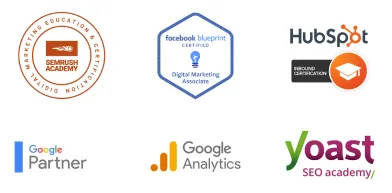


Growing Businesses Since 2008
We have helped hundreds of businesses just like yours. Working for or along-side of business owner, managers, staff, or even board of directors, LOJO is ready to be an asset to your business.
Our team has been curated through the years for individual skills, personalities, and capabilities. Our clients put their trust in us to help them grow. We are here to do just that.



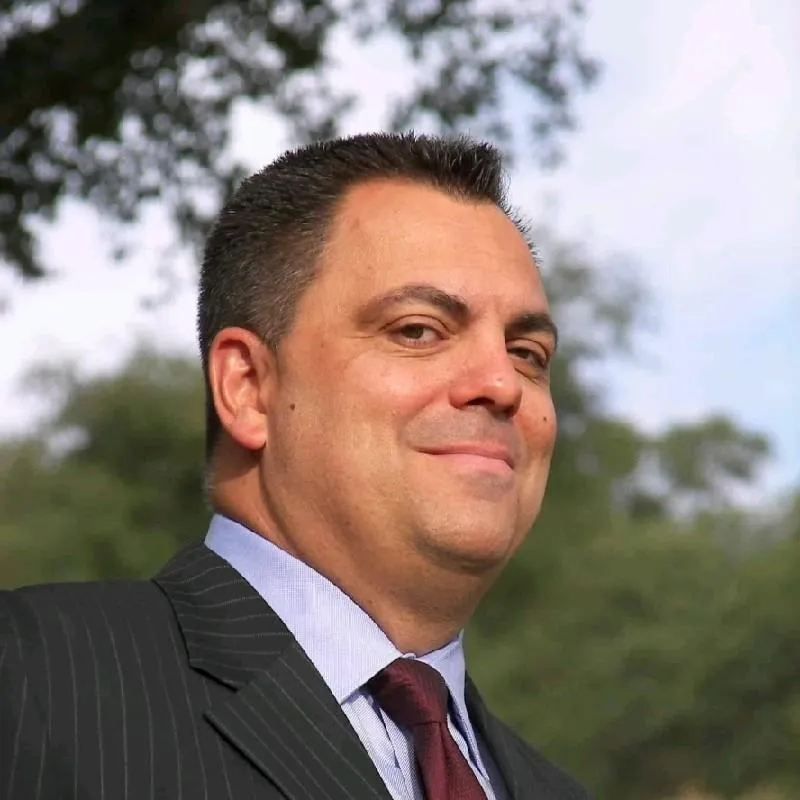
Matthew Rogers, President
iProspect Check
After spending several months reviewing multiple proposals from several different companies we engaged LOJO to develop a new website that represents our company effectively. We worked initially with Stephen Platte who helped create the scope of the project. Stephen was knowledgeable and always followed up with me on time and as promised.
He "closed the deal" for LOJO with his professionalism, service orientation and easy going approach. Once we signed the contract we were introduced to Jay Kelly who would be the creative lead for LOJO. This was the most challenging part of the project for my company, as there was no shortage of ideas from our side. Jay managed the project flawlessly, and once we had all agreed to the design, Jay introduced us to Eric.
Eric Lay is one of the founders of LOJO. Eric took the design we had developed and brought it to life. We delivered content as quickly as he requested it. Eric kept the project on task and we responded by exceeding every deadline for content. In turn, once provided, literally not a day went by that Eric didn't add the content and take the next step. In just a few weeks we launched our new website. Eric is a pleasure to work with.
His positive attitude and consultative approach really enhanced the experience and made a big difference for us in the outcome of our project. We would welcome you to visit our website to take a look at the quality work of LOJO. We are very pleased with LOJO and look forward to working with them in the future as we pursue an aggressive SEO strategy."
After spending several months reviewing multiple proposals from several different companies we engaged LOJO to develop a new website that represents our company effectively. We worked initially with Stephen Platte who helped create the scope of the project. Stephen was knowledgeable and always followed up with me on time and as promised.
He "closed the deal" for LOJO with his professionalism, service orientation and easy going approach. Once we signed the contract we were introduced to Jay Kelly who would be the creative lead for LOJO. This was the most challenging part of the project for my company, as there was no shortage of ideas from our side. Jay managed the project flawlessly, and once we had all agreed to the design, Jay introduced us to Eric.
Eric Lay is one of the founders of LOJO. Eric took the design we had developed and brought it to life. We delivered content as quickly as he requested it. Eric kept the project on task and we responded by exceeding every deadline for content. In turn, once provided, literally not a day went by that Eric didn't add the content and take the next step. In just a few weeks we launched our new website. Eric is a pleasure to work with.
His positive attitude and consultative approach really enhanced the experience and made a big difference for us in the outcome of our project. We would welcome you to visit our website to take a look at the quality work of LOJO. We are very pleased with LOJO and look forward to working with them in the future as we pursue an aggressive SEO strategy."

Matthew Rogers, President
iProspect Check
The team at LOJO were wonderful to work with. They are well organized and very patient as we worked through our marketing strategy and developed a well thought out and clear action plan at a reasonable price. We will definitely be back for our future campaign needs."

Jon Crosby, Founder
Dazil
